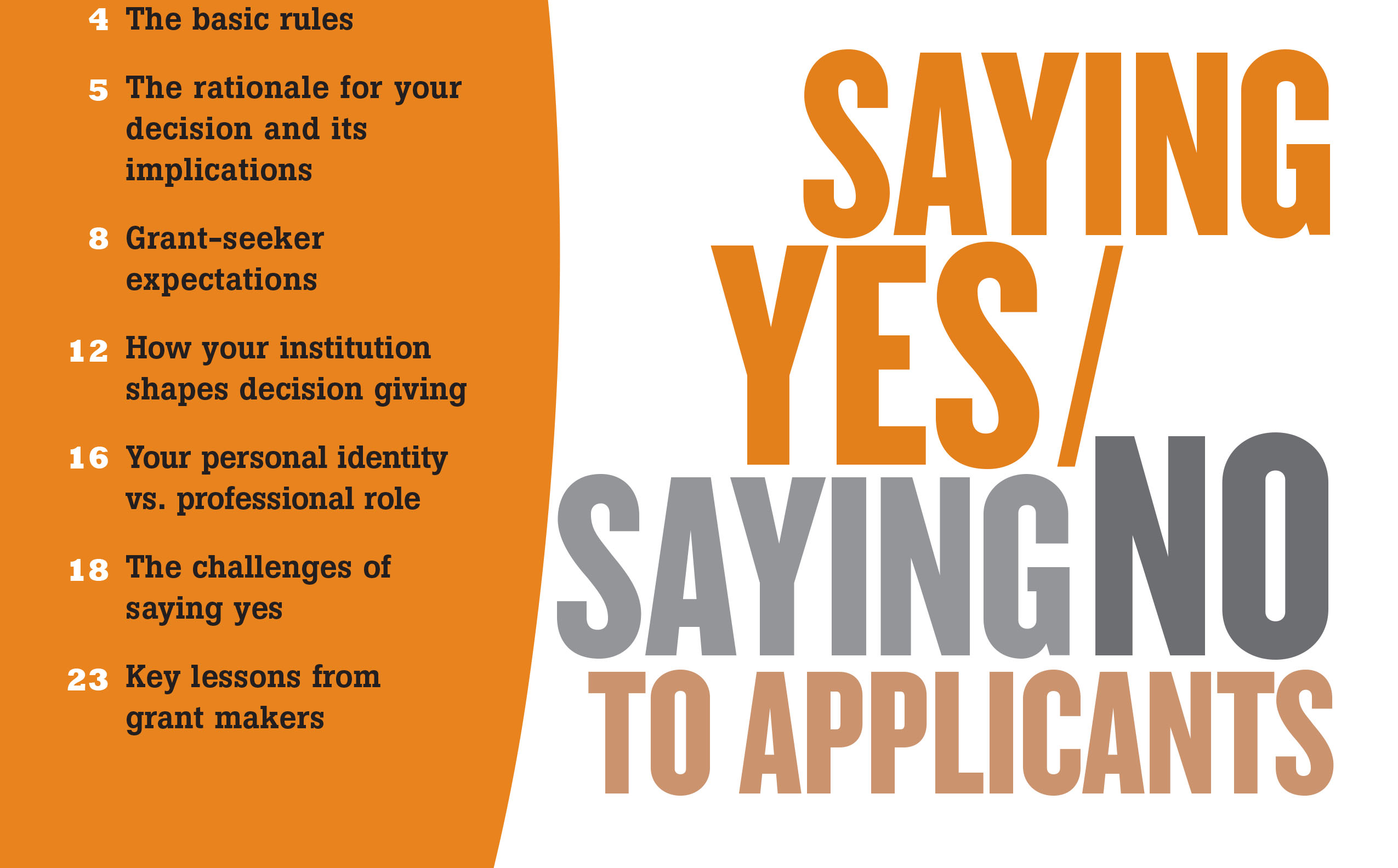A Customer Service Approach to Decision Giving Fostering a culture of respect
“We always tried to treat applicants with respect,” explains the vice president for programs at a mid-size foundation, “but it’s only been in the last few years that we’ve begun to develop and implement systems to promote the idea of customer service for our grantees.”
The foundation has begun emphasizing customer service with all its staff, beginning with the development of an issue statement committing the foundation to “apply the ‘golden rule’ to our customer grantees, investees, and applicants: Treat them as we would like to be treated, with timely responses, courtesy, respect, and clarity.” Still, as the vice president concedes, “there’s not a foundation in the world that would disagree with this.
The real question is: How do you translate the principles into operations?” To start, the foundation is attempting to foster a culture of customer service, largely through careful recruiting of program officers. “We look for people willing to act this way up front,” she says. “When they come for interviews, we note whether they treat our receptionist in a respectful, friendly way.
This is also a big issue when we talk to their references.” And foundation managers occasionally accompany program officers on site visits — in part to learn about on-the-ground work in their field, but also to observe how staff members are interacting with applicants. “The key to making people sit up and notice,” however, has been the development of formal customerservice benchmarks that are linked to annual personnel reviews. For example, the foundation established targets for the length of time it takes to process proposals: five days maximum for an initial review of a letter of inquiry, to determine whether it meets the guidelines; 30 days for a substantive review and any necessary conversations with applicants to determine whether to invite a proposal; and, once a proposal is submitted, four months maximum to a final answer. Merit pay increases are determined in part on meeting these benchmarks.
The foundation is not forcing program officers to shoulder the burden of customer service alone. If some foundation process beyond a program officer’s control creates a problem, changes are considered. For example, the board — which is “very supportive of the customer service approach” — now meets every month (full meetings every quarter, with docket reviews in off months) in order to speed proposal reviews. And as it attempts to think about how to encourage “quality — real respect in interactions,” the foundation is exploring a grantee and applicant survey to be administered by an independent third party. “None of this is perfect,” the vice president says. “But it is a start.”

